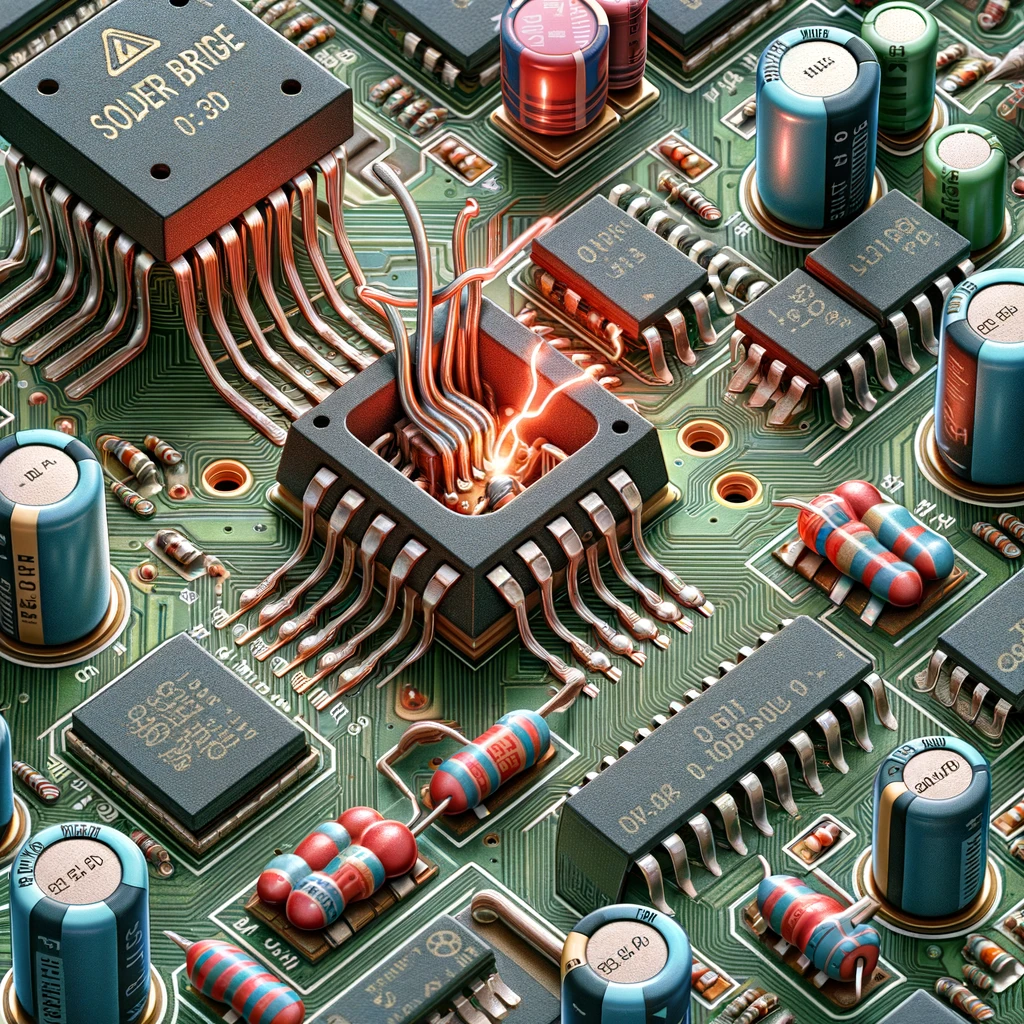What Is Solder Bridge? An Ultimate Guide
Soldering is a fundamental skill in the electronics manufacturing and repair industry, serving as the backbone for creating durable and reliable connections between components.
However, even the most experienced technicians can encounter a common issue known as a solder bridge. This guide delves into what solder bridges are, their causes, prevention strategies, and repair methods to ensure your soldering projects are flawless.
What Is a Solder Bridge?

A solder bridge is an unintended connection between two or more adjacent circuit traces, pads, or pins that should not be connected, created by excess solder.
This phenomenon can cause short circuits, leading to malfunctioning or damaged electronic devices. Solder bridges are most commonly seen in printed circuit board (PCB) assembly, where components are densely packed, and the margin for error is slim.
Causes of Solder Bridges
Understanding the causes of solder bridges is crucial for prevention. Here are the primary factors that contribute to their formation:
- Excessive Solder: Applying too much solder can overflow onto adjacent pads or traces, forming a bridge.
- Insufficient Flux: Flux helps to clean and prepare the surface for soldering. Insufficient flux can lead to poor solder flow, increasing the likelihood of bridges.
- Improper Soldering Technique: Incorrect angle, temperature, or timing during the soldering process can cause the solder to spread incorrectly.
- Inadequate Pad Design: Pads that are too close together without sufficient spacing can easily lead to solder bridges, especially in high-density PCB layouts.
Prevention Strategies
Preventing solder bridges is more efficient than fixing them. Here are strategies to minimize their occurrence:
- Correct Soldering Technique: Practice and master the art of applying the right amount of solder for each joint. Use the correct soldering iron tip size and shape for the job.
- Use Flux Wisely: Apply an adequate amount of flux to clean the surfaces and improve solder flow, reducing the risk of bridges.
- Optimize PCB Design: Ensure there is adequate spacing between pads and traces. Use solder mask between closely spaced pads to prevent accidental bridging.
- Quality Soldering Equipment: Invest in quality soldering equipment with adjustable temperature settings to better control the soldering process.
How to Fix Solder Bridges
Despite best efforts, solder bridges can still occur. Here’s how to address them effectively:
- Desoldering Wick/Braid: Place the desoldering wick over the bridge and apply the soldering iron on top. The wick will absorb the excess solder, removing the bridge.
- Solder Sucker: A solder sucker can be used to remove large solder bridges. Heat the solder bridge with your soldering iron and then use the solder sucker to vacuum up the molten solder.
- Reflow and Drag: For fine-pitch components, sometimes simply re-applying flux and gently dragging the soldering iron across the bridged pins can clear the bridge without removing too much solder.
Tips for High-Quality Soldering
Beyond preventing solder bridges, here are additional tips for ensuring high-quality soldering:
- Keep Your Equipment Clean: Regularly clean your soldering iron tip and keep your work area free of debris and dust.
- Inspect Your Work: Use a magnifying glass or a microscope to inspect your solder joints, ensuring there are no bridges or cold joints.
- Practice Good Hygiene: Wash your hands before starting your soldering project to remove any oils or residues that could contaminate the soldering process.
- Continuous Learning: Soldering is a skill that improves with practice and continuous learning. Stay updated with new techniques and tools to enhance your soldering quality.
Conclusion
Solder bridges can be a frustrating obstacle in the path to perfecting your soldering projects, but with the right knowledge, techniques, and tools, they can be effectively prevented and corrected. By understanding the causes of solder bridges and applying the strategies outlined in this guide, you can achieve clean, reliable, and professional soldering results.
Whether you’re a seasoned technician or a hobbyist, mastering the art of preventing and fixing solder bridges is essential for the success of your electronic projects.
Share:
More Posts

PCB Ruler: A Comprehensive Guide
PCB Ruler: A Comprehensive Guide What is a PCB Ruler? A PCB ruler is a functional tool made from the same materials as a printed

Thermal Vias: A Comprehensive Guide for PCB Heat Management
Thermal Vias: A Comprehensive Guide for PCB Heat Management Why Heat Management Matters in PCBs Before diving into thermal vias, let’s understand why heat is

PCB Testing Guide: Everything You Need to Know
PCB Testing Guide: Everything You Need to Know This guide will walk you through the essentials of PCB testing, including why it matters, common testing

What Is A Rogers PCB?
What Is A Rogers PCB? If you’ve ever used a smartphone, connected to Wi-Fi, or marveled at satellite communication, you’ve indirectly interacted with a technology

